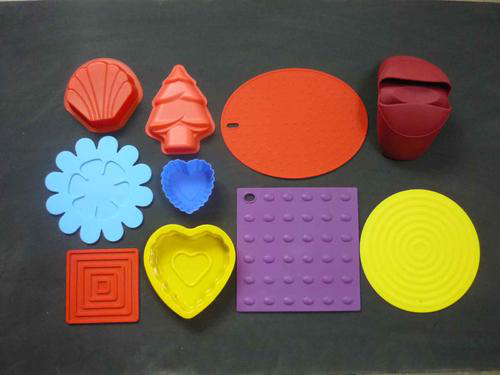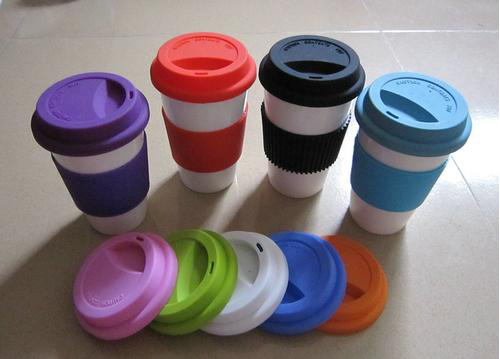In recent years, silica gel has become very popular and has been continuously introduced to the market as a safe alternative to traditional plastics. We can see the application of silicone everywhere: baby bottle pacifiers, kitchen utensils, toys, cups, food containers, caps on bottles, and containers. The silicone material can withstand high and low temperatures. This is why silicone is widely used, for example, it is used as a baking mold in an oven, as well as liquid silicone pacifiers, baby bottles, etc.

Many people think that silicone is the same as plastic. Therefore, a question often arises: Is it healthy and safe enough?
The question of whether silicone or liquid silicone is safe can be answered in the following ways:
Is silicone/liquid silicone plastic?
Silica gel, also called siloxane, is a mixture of synthetic rubber and synthetic plastic polymers. They can be made into various shapes and used to make malleable rubber-like objects or hard plastic resins. We treat silicone in the same way as other plastics because they have the following plastic-like properties: bendable, stretchable, transparent if necessary, resistant to high and low temperatures, waterproof, and sealed. They can be shaped like plastic, so they can be made into almost anything. Although they are impermeable to water, they have high air permeability, so they can be used in medical or industrial applications that require such air permeability. They are also easy to clean, and these characteristics make them very popular in the manufacture of cookware and kitchen utensils.
What is silicone?
Many people seem to think that silica gel is a natural material extracted directly from the sand. It is not. Like any plastic polymer, silica gel is a synthetic material, a mixture that contains a variety of chemical additives derived from fossil fuels. The main difference between it and other plastics is that the main chain of silica gel is made of silicone instead of carbon, so its stability is strong.
Summary/Key Points:
Silicone resin can be bent and stretched, resistant to high temperatures, and waterproof. Its properties are very similar to plastic.
Is silicone toxic/harmful?
There is no clear answer to this. Silica gel is a very stable polymer that can withstand various temperatures and chemicals. Therefore, they are considered relatively safe. Many experts and responsible testing organizations believe that silica gel is non-toxic and safe, so it can come into contact with food and drinking water without any problems. For example, Health Canada stated that no silicone kitchen products are currently used to cause health hazards. Silicone rubber does not react with food or beverages, nor does it produce harmful fumes.
Although many studies have confirmed that silica gels are very stable, they are not completely inactive. You must be careful to see if they will not release anything! Some silica gels also cause biological effects, such as B. Inflammation. In these studies, the results show that silica gel can release components and chemicals. For example, a study tested the release of siloxane from silicone pacifiers and baking utensils in milk, baby food, and simulated alcohol and aqueous solutions. It was found that no siloxane was released from milk or other solutions after 6 hours. However, after 72 hours, several siloxanes were detected in the alcohol solution. It is generally believed that siloxanes can damage the endocrine system, and some of them are suspected of causing cancer.
Since siloxane is widely used in the manufacture of silicone polymers and household products, the concentration of siloxane in the environment has reached a detectable level. Since they are very stable, they can be detected here for a long time.
However, the scientific evidence on the hazards of siloxane is still very weak, and it is difficult to make an exact statement. Therefore, we should pay special attention to this material, especially now that more and more people are paying attention to chemicals that may damage the endocrine system.
Summary/Key Points:
Silicone has high stability, but this does not mean that it will not release any chemicals.

How do you distinguish between good and bad silicone?
If you decide to use silicone products in your life, here are some tips on how to use silicone:
The quality of silicone must be good, preferably medical grade or at least food grade. The higher the quality of organic silicone, the lower the possibility of releasing chemical composition. Squeeze and distort the surface of the silicone product for testing. If you see a white part, the product can be used as a filler because pure silicone will not change its color. If fillers are present, the product may not be uniformly heat-resistant, and the odor may be transferred to the food. Here, the filler can be inferior silica gel, or even not silica gel at all. Oven gloves made of silicone, kitchen utensils such as spatulas or spoons, splash guards, and pot holders should be no problem because they have very little contact with food. The safety requirements for pacifiers and pacifiers are higher. It is best to use medical liquid silicone. It is best not to wash in the dishwasher, but to cook separately in a container. If it is muddy or worn, it needs to be replaced. Ideally, it should be done every 6 to 8 weeks. Of course, if your child is not allergic to silicone, you can safely use such products.
Recent Post
- Custom Silicone Rubber Molding Protective Cover for Many Devices
- Custom ISO 10993 Medical Grade Silicone Parts For Health Care & Medical Applications
- Types of Rubber Moulding
- How to Make a Mold for Rubber Part?
- What is Food Grade Silicone and Why is it Better Than Plastic?
- How to Find a Reliable Silicone Beads Manufacturer?
